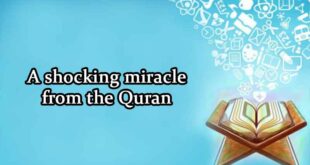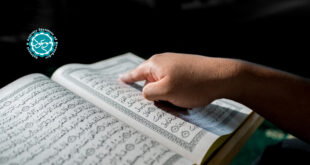We shall treat the first four of these points in what follows. It is enough to comment here on the definition of the rationalist school he gives by saying that the shari‘ah has two facets: the dogmatic aspect, or what is designated as the principles of the religion, which the faith requires of the Muslim, and the practical aspect, or derivatives of the religion, which are the divine laws associated with worship, transactions, rights, the judicial process, and all that which is investigated in the science of fiqh.
Allah forbid that our Shaykh al-Mufid and all the Imamiyyah, not to mention the Mu‘tazilah and those who followed them, such as the Zaydiyyah, should rely on rational or interpretative explanations for the derivatives of the religion, such as prayer, fasting, zakat, hajj, and the other laws of worship and transactions, including everything contained in the shari‘ah and explained comprehensively and succinctly in the books of fiqh.
It is true that there are some who speak of a hidden meaning (batin) in the shari‘ah, and who explain prayer, fasting, and hajj in a way that excludes their being acts of worship; instead, they maintain, the shari‘ah contains secrets such that he who discovers them and holds faith in them has no need to act according to the ostensive meaning of the divine law, and that the burden of the law is lifted from him. How few are those who believe such things and speak of themselves as Muslims; and how many are those who accuse people of this falsely and maliciously, and are actually trying to dispel suspicion or repel accusations leveled at them.
It is necessary for us to add that rationalist and interpretative explanation of the Book [of Allah] and the Sunnah regarding matters of belief is not, as some would have it, arbitrary or wishful, zealous or fanciful, or some sort of search for buried treasure, or a devilish incitement to revolt against Allah and His Prophet. Rather, it centers upon the adoption of the stronger of two arguments, and the explication of the weaker of the two in light of the stronger, or on the basis of a comparison and evaluation of the evidence used. For this activity there are principles and guidelines, which form the subject matter of the science of usulu ‘l-fiqh.
There is no difference in the principal beliefs between the two Imami schools
The Shaykh as-Saduq stands out amongst the Imami scholars of Tradition and Narration. A few aspects of his distinctive character have been mentioned in the introduction to the English translation of his book I‘tiqadatu ‘l-Imamiyyah. He came from a scholarly family, distinguished in the science of hadith and its transmission, and he faithfully adopted their methods. All of what he held conforms with what the Imami scholars of hadith agreed upon, especially the Qummi school, or at least with what the greatest of them taught, except in a few places, such as the inattention of the Prophet in prayer. In this latter opinion he followed his teacher Muhammad ibn al-Hams ibn al-Walid, whom the majority of scholars, Tradition-ist or otherwise, did not agree with.
A comparative study of I‘tiqadatu ‘l-Imamiyyah and the commentary made upon it by the Shaykh al-Mufid in Tashihu’l-‘tiqad reveals the overwhelming concurrance of the Tradi- tionist and theological schools of the lmamiyyah with respect to the principles of dogma and its details; in comparison, the points where the two schools disagree in these matters are very few. Indeed, the difference between them is only in the method of demonstrating their opinions in dogmatics.
A comparative study also reveals that criticisms by lmami theologians of the hadith which the Traditionists relied upon did not arise essentially from their stances on dogma and their disagreements about the principles of theology, but rather was centered on standards for the criticism of the hadith each Traditionist employed, through criticizing the chain of transmission, bringing its narration into question and showing that one of its transmitters was not trustworthy, or through casting doubt upon what it proved, rejecting it because it contradicted a stronger proof from the verses of the Holy Qur’an or from hadith whose chain of transmission was superior to it or whose proof was clearer.
This must be set against the accusation usually made by non-Imami Traditionists, including the theologians of the Jahmiyyah, Mu‘tazilah, Murjiah, and others: that they completely rejected verses of the Holy Qur’an and well-established Prophetic sunnah if these disagreed with their own theological views.
It may be that the secret to understanding this methodological dispute between the Imami and non-Imami Traditionist schools goes back firstly to the difference between the nature of the Imami and non-Imami hadith which each of them chose to employ, as we shall indicate. Secondly, Imami and non-Imami mutakallims are distinguishable in that rarely does one come upon an Imami mutakallim who is not also well versed in hadith and its sciences, such that he combined these two qualities equally in his theology.
If a man specialized in hadith, he was not ignorant in kalam, adopting a hostile and controversial stance opposing it; and if he was addressing theological issues, then he did not find himself able to dispense with hadith and their soundness of transmission, as was said about others.
Another of the Shaykh al-Mufid’s works, Awailu ‘l-maqalat fi ‘l-madhahib wa ‘l-mukhtarat reveals differences between Imami scholars up to his time, whether they were scholars exclusively of hadith and fiqh, or exclusively of kalam (to the best of my knowledge, this applies only to some members of the Banu Nawbakht), or of both. But these differences are few when compared to their agreements. Such a study also reveals differences between these scholars and those from other prominent sects of Muslims up to al-Mufid’s time.
On these matters, there is a need for a detailed study com- paring the books of as-Saduq and al-Mufid. As space is limited here, however, it will suffice to cite the conclusions of a Western scholar, Dr. Martin J. McDermott, as they appear in his book The Theology of al-Shaikh al-Mufid. Here I quote a short passage, in which he states:
Ibn Babuya [as-Saduq] was a traditionist. When he set out to explain a difficulty or answer a question, he preferred to quote a tradition rather than reason out an answer of his own. Even his creed, the Risalat al-i‘tiqadat, consists largely of traditions strung together. Nevertheless he did hold many of the same theses as the theologians, and when a tradition he was reporting seemed to contradict one of his theological views, on God’s Unity or Justice, for example, Ibn Babuya would interject his own interpretation of the tradition.
Here in lies Ibn Babuya’s major difference from his pupil, al-Mufid, who is a theologian as well as a traditionist. When a point can be proved both from revelation and an argument from reason, al-Mufid generally prefers to rely on the latter, quoting the tradition or quranic text as supplementary argument.
Most of the important theological doctrines held by Ibn Babuya and his pupil are the same. . . .
Here he goes on to review the points of difference between the two as evident in their books. Then he states:
Ibn Babuya, then, is a traditionist with many views that are akin to Mu‘tazilite theses. Al-Mufid is a theologian as well as a traditionist, and his views, though basically simi-lar to Ibn Babuya’s, go further in a Mu‘tazilite direction.2 I shall not comment on McDermott’s words at all here, as the reader will himself find the differences between us in opinion and in conclusions in the following discussion.
Wide differences between the two Non-Imami schools
We must examine, if only very briefly, what has been referred to up to now as the ‘non-lmami school of theologians’, since there are common points which are mentioned as stemming from the beliefs of the ‘poeple of hadith and Tradition’, and on the basis of which their views and beliefs are weighed against those of others, which were in fact taken from the non-Imami school, and proofs and evidence which are mentioned in this field which exist in a complete form in the body of hadith which the non-Imami Traditionists relate, and which form the sole basis for the opinions which they adopted, or which were attributed to them.
In addition, the intellectual and doctrinal contradiction between the Traditionist and theological schools in those days they were the Mu‘tazilah, the Jahmiyyah, the Murjiah, and those who followed in their wake was borrowed from non- Imami hadith, from the opinions of non-Imami Tradition-ists, from their attitude towards the views of the theologians, from their dismissal of them, and from their criticism of those who held them; and indeed, from their criticism of them for the theological trend, in a general sense, in religious belief.
It is not correct to make these general characteristics, or these general contradictions, into a general trait of either the Imami or the non-Imami Traditionist trend, which is above all else based on the Holy Qur’an and the Sunnah, in deducing and formulating religious doctrine.
What is called the ‘Traditionist school’ a more accurate term for them, which they themselves prefer, is ‘the people of hadith and Tradition’ (ahlu ‘l-hadith wa ‘l-athar) – was not a school of thought which was defined and clearly characterized in all or many respects, as was the case with the Mu‘tazilah or the Jahmiyyah, for example, so that it is possible to specify what opinions they agreed upon, and what distinguished them from other sects.
Moreover, this designation was assigned to them not by their own choosing, but was derived from their positions and views. All that they believed was: that those who were involved with hadith should not go beyond the hadith which had come down to them, and which they believed to be true, in explaining their opinions and representing their beliefs, but that they should rely on the narration of the ostensive wording of the hadith for expressing their views and should not change the wording for the convenience of the meaning.
Whatever we may say about them, the Traditionists certainly did not fit into one single mould, but rather into many, since the extent of the difference between any one Traditionist and any one of those they called theologians is only to be measured by the quantity of what the Traditionist narrated and the number of hadith he narrated whose veracity he was committed to. It is clear that the Traditionists differed in the number of hadith, which they narrated, and in the number, which they believed to be true.
Moreover, they varied between those who had few and those who had many, and between those who were generous in judging veracity, and those who were strict, not judging them to be true unless many conditions were fulfilled. On this basis the hadith differed in terms of those whose narrations they agreed upon and those, which were only narrated by some, as well as in terms of those whose veracity they were agreed upon and those whose veracity they were not agreed upon.
It should be noted that even though the Ash‘Ari School was based on the rejection of Mu‘tazili thinking, its teaching was primarily concerned with reconciliation and not rejection. For the teaching encompassed by it and contained in it went back to Abu ‘l-Hasan al-Ash‘ari, ‘Ali ibn Isma‘il ibn Abi Bashir, al- Basri (260/874 or 270/883–324/936), the imam of the Ash‘aris, who quarrelled with his Mu‘tazili teachers over the fact that, according to him, they used to reject anything that went against their views even when the Holy Qur’an and the authentic Sunnah, in his own view, supported it. However, there is not enough space here to speak at length about this or to marshal the evidence concerning it.
Tags Imamiyyah
Check Also
15 European Countries With Most Muslims
According to Mouood, quoting by World Atlas: 15 European Countries With Most Muslims By 2050, Muslims …
 Mouood Mouood English Edition
Mouood Mouood English Edition



